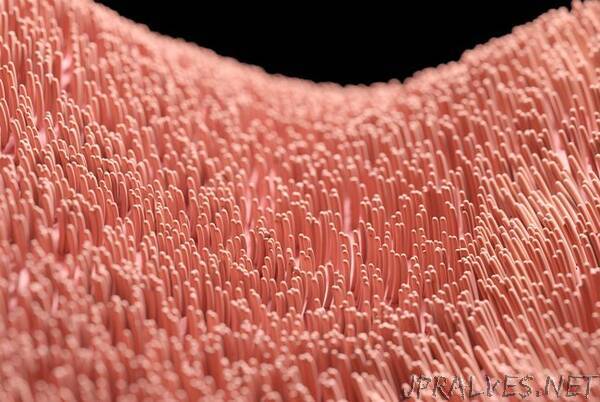
“Our researchers have developed a new way to make magnetic artificial so-called cilia comparable in size to real cilia that could be used in future microfluidic devices and sensors.
Cilia are tiny hairs used in transport and sensing in the human body. Many scientists are trying to make artificial cilia for applications in microfluidic devices and sensors, but to date, they are much larger than biological cilia. Researchers at Eindhoven University of Technology and EPFL in Switzerland have solved this issue by designing a new way to make magnetic artificial cilia with the same maneuverability and size of biological cilia.
In the biological world, the ultimate micro-controllers are cilia. These tiny hairs can be found on the surface of microorganisms and help propel them through liquids. Cilia also line the walls of our airways and transport mucus out of our lungs, while in our kidneys, cilia act as sensors.
“Cilia have quite amazing abilities, and this has inspired scientists to develop artificial counterparts for use in microfluidic-based medical sensors or even to allow microrobots to walk,” says Jaap den Toonder, professor in the department of Mechanical Engineering at TU/e, who is also one of the pioneers of the research field of artificial cilia. “But there are issues, with the most significant relating to size. Artificial cilia can be one hundred times bigger than biological cilia, which prohibits their use in small-scale applications.”
FABRICATION BREAKTHROUGH
To solve this size problem, Den Toonder along with Tanveer ul Islam (EuroTech postdoctoral researcher at TU/e) and Yves Bellouard (EPFL, Switzerland) have developed a breakthrough fabrication approach for biologically-sized artificial cilia (length of 6 micrometers, radius of 200 nanometers). The cilia can be activated using a magnetic field and can exhibit large and fast oscillations, just like real cilia. The new fabrication approach has been published in PNAS.
The cilia are made from a magnetic elastomer, which is a number of magnetic particles mixed in a polymer material, and the fabrication approach consists of two parts. First, the magnetic materials are prepared via a carefully designed chemical process, which is then followed by a micromolding process to precisely shape the cilia.
APPLICATIONS GALORE
This new fabrication approach opens up a host of possibilities at length scales comparable to the native world of biological cilia.
“Our approach will allow for smaller, more sensitive microfluidic devices where these cilia can sense tiny fluctuations at minute length scales,” says Tanveer ul Islam. “And we can use these cilia to study more accurately how cells react to small, applied forces, which is of great interest to tissue engineers and biophysicists alike.”
And the researchers are also thinking further down the line in terms of the next steps with this research. “We are now making dense carpets of our nanoscale magnetic cilia and then grow cells on these cilia. This allows use to study the response of these cells to subcellular forces, which can be applied through precise displacements of the cilia,” adds Den Toonder.
Naturally, these magnetic cilia can be used to mimic the response of biological cilia, thus providing researchers with a nanoscale laboratory to study how they truly work. “For example, we plan to make an artificial lung and study how our magnetic cilia transport mucus of the lungs, and how we can affect the process with biochemical agents,” says Tanveer ul Islam.
CONQUERING CHALLENGES
In developing the new fabrication approach, the researchers were faced with two main challenges. “First, the approach needed to be accurate enough to create tiny cilia with a length that is about 10 times larger than their diameter,” notes Tanveer ul Islam. “When you’re operating at the micron and nanometer scale, this can be quite difficult.”
The second challenge related to making cilia that were both flexible and highly magnetic. “To mimic the motion of biologically cilia, our artificial cilia needed to be flexible,” says Den Toonder. “But we also wanted to control cilia behavior from a distance, and magnetic materials are ideal for this. Of course, these materials respond to external magnetic fields, but crucially biological materials are not affected by magnetic fields. This is particularly important if we want to use our cilia in biological settings.”
FUNDING
This research is funded by the Eurotech Postdoc fellowship programme and the European Research Council (ERC) Advanced Grant Bio-Plan.
FULL PAPER DETAILS
“Highly motile nanoscale magnetic artificial cilia”, Tanveer ul Islam, Yves Bellouard, and Jaap den Toonder, PNAS, (2021).”
